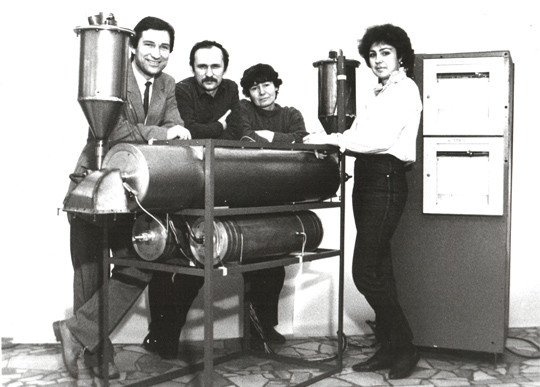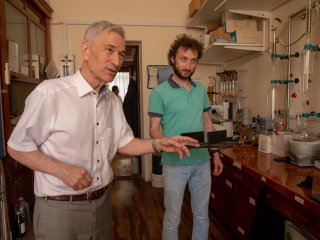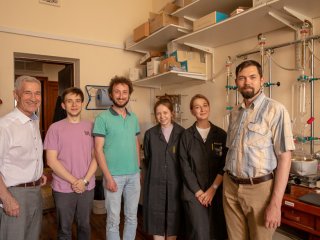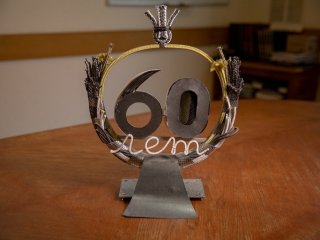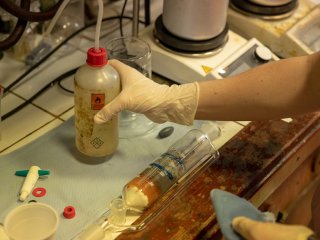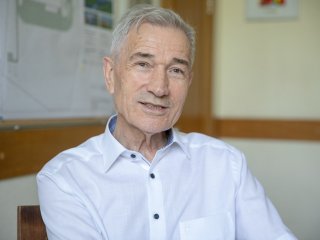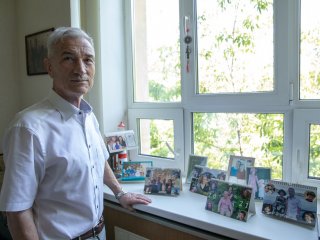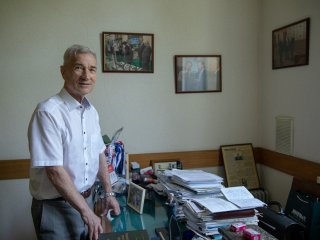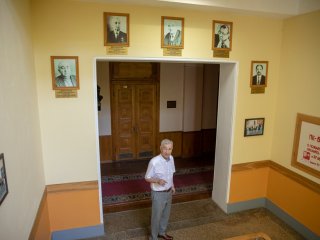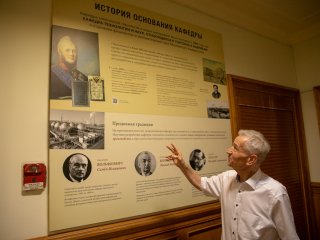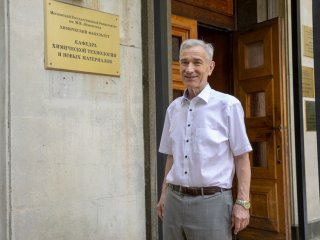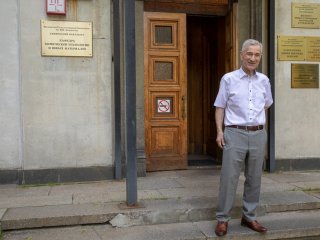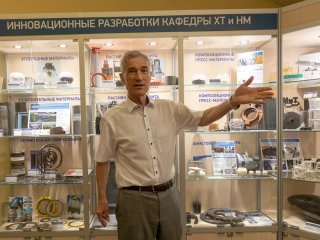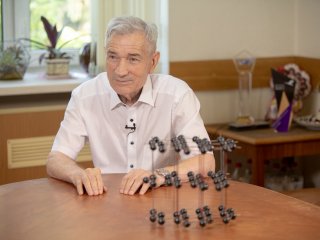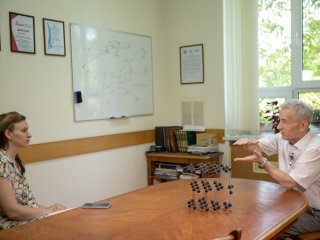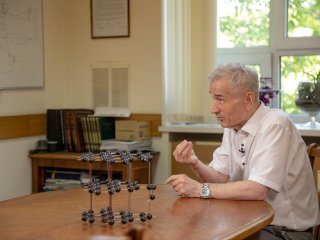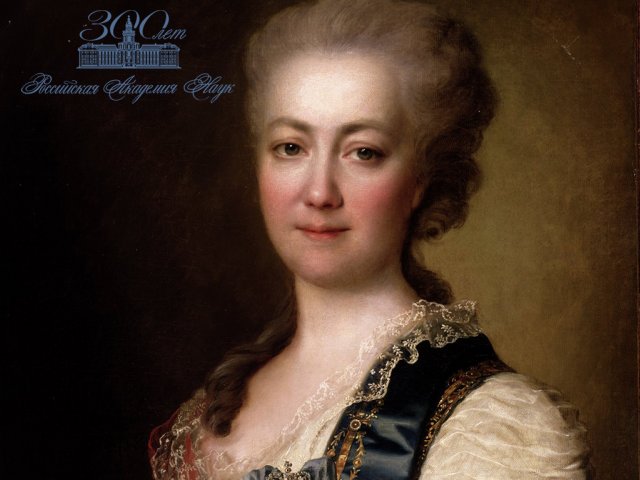Since the late 70s, Moscow State University has been conducting fundamental research in the field of chemistry and physics of intercalated graphite compounds. The research delivered meaningful results, after which it was decided to establish an applied research laboratory of new carbon materials chemistry headed by a young scientist Viktor Avdeev. However, in the 90s, which was a hard period for the country, the funding of science was suspended, and the scientists had to look for new opportunities for developing this advanced technology. Viktor Vasilyevich gathered a group of scientists and engineers and founded the Unichimtek Research and Production Center – the first small-sized public enterprise of Moscow State University. What did they achieve? And what are the core areas of modern material science? Viktor Vasilyevich Avdeev answers those questions.
Viktor Vasilyevich Avdeev – Doctor of Chemistry, professor, Head of the Department of Chemical Technology and New Materials, Faculty of Chemistry, Moscow State University. A successful tech entrepreneur, he is the Chair of the Board of the UNICHIMTEK Group of Companies, and one of the founders of the Institute of New Carbon Materials and Technologies.
– What are the key trends in material science?
– It may sound trite, but I share the view that the 21st century is the age of composites. And for Russia, it’s the age of developing chemistry. The challenge before us is to move away from the status of raw material power, which is what we are striving for.
Getting back to composites. First of all, we are focusing on non-metallic composites. But the “friendship” of such composites and metals is inevitable and unavoidable. At our department, we work with non-metallic composites, mainly carbon ones. Furthermore, we aim to develop fiber-reinforced polymer composites.
Everyone heard of graphene and multigraphene structures. More than 40 years ago, when we were just starting, these structures were called thermally fissioned graphite. As you know, graphite is capable of expanding and foaming up several hundred fold. Imagine a 1 mm pellet. If you intercalate it between the layers of graphite, i.e., introduce other substances there, and then heat, the 1 mm pellet will turn into a meter-long “snake.” On an industrial scale, a kind of powder or fluff is obtained, a cubic meter of which weighs about 1 kg. For comparison, a cubic meter of air weighs 1.4 kg under normal conditions. This is the extent to which graphite can be fissioned: hence it is sometimes called black snow.
Today multigraphene has wide application in a number of areas. In particular, due to the elasticity of this material, it is used in the manufacture of seals. It is, in fact, comparable to rubber, but more resistant to high temperatures and aggressive environments. Its elastic properties are retained even at temperatures up to 500 °C under normal conditions and up to 2000 °C in an inert environment, or in a vacuum.
Noteworthy, in the last few years, Russian scientists have revolutionized the sealing technology. In a professional environment, there is such notion as linear rotational speed of the shaft along the seal. In the Soviet era, they managed to reach the speed of 8 meters per second. Thanks to multigraphene we brought it up to 50 meters per second. Simply put, the pump performance significantly increased, while material intensity reduced.
With the support of the Ministry of Education and Science, we carried out a number of R&D projects and built a plant which can produce several thousand tons of material per year based on thermally expanded graphite or multigraphene structures. A large volume of the plant’s products will be exported, providing, of course, for Russia’s own needs.
In addition, graphene is used as a heat conductor. According to scientific publications, the thermal conductivity of graphene is 12 times that of silver. Graphene itself can be considered both a model object and an abstraction: one flake of graphite is graphene. Nevertheless, graphene-based materials have a thermal conductivity 1.5–2 times that of copper and silver. This property is also used to create climatic panels that can both heat and condition rooms.
And of course, graphene is a great adsorbent. 1 gram of this powder absorbs up to 80 grams of oil products and organic matter. When the Norilsk oil spill occurred, the employees of our faculty also took part in the elimination of consequences using multigraphene structures.
I cannot but mention one more area that is rapidly developing both at the university department and at Unichimtek under the auspices of Alexey Kepman: the production of structural carbon fiber. We all know the story of Russian MC-21 aircraft. At some point, American companies were banned from supplying materials to Russia due to sanctions, which could have terminated the project. Fortunately, we at Moscow State University have already worked on similar materials, and already had a ready-made proposal for MC-21. And now we continue to supply carbon fiber composites that are widely used in aircraft construction.
If we talk about today, we can see a return to materials for chemical current sources and hydrogen energy. This area was developed in our laboratory back in the 80s, but due to the crisis, we had to abandon it. Now there is a great deal of interest in this area at government level, which cannot but please us.
– You talked a lot about manufacturing. How significant is it when we talk about the link between science, education, and end technologies?
– In this regard, I have a very firm and active stance. I believe that the role of universities in our country is underestimated. Remember the first universities, the so-called first-generation universities. They were giving, first of all, theological education. Then came the era of exact sciences, when Humboldt-type craft universities were established, where attention was paid to practical experience. The education process was perceived as training the elite. Knowledge was passed from hand to hand, that is, from professor to student. And while the Moscow State University, the first in Russia, was established relatively late, in the 18th century, from the very begging it became a Humboldt or craft university. What makes it unique? The unity of science and education.
Later, already in the 20th century, there was a revolution that began in the United States in the late 70s. The role of turning knowledge into innovation and profit was imposed on universities. Thanks to this, universities have gradually become independent from budget funding. The ideology of so-called third generation universities emerged, under which universities learned to turn knowledge into money, actively participating in the socio-economic development of countries and regions.
Science is becoming more complex, so today acquiring knowledge is an expensive undertaking. It is necessary to develop R&D infrastructure, purchase expensive devices, and finance projects.
I’ll tell you about our experience. Back in the 80s, we created a whole range of new materials. Thanks to that, we were given an opportunity to establish an applied laboratory where we could turn knowledge into concrete solutions for the defense industry and national economy. This is how the Research Laboratory of New Carbon Materials Chemistry became the fourth and last applied laboratory at Moscow State University. After the collapse of the Soviet Union, the funding ceased. Fortunately, back in 1990 under Soviet rule, we managed to establish the first small-sized public enterprise of Moscow State University – Unichimtek, short for University Chemical Technologies. Essentially, we earned ourselves the right to do science.
When the ideology of third generation universities came to our country, fundamental and applied science became an integral part of high-tech business. Today science and education are tools for a better life and new discoveries that are changing the world. It is encouraging that we are not the only ones at the Faculty of Chemistry: there are several such entrepreneurial groups, and many scientists bring the research to practical implementation, to the creation of pilot production facilities. I hope that industrial production will also result from this.
– And how do you see the mission of today’s universities?
– As I see it, the university’s mission is to put forward strategic ideas and solve complex problems. And the university’s role depends on what level of ideas the researchers put forward and what are the competencies developed.
Moscow State University is significant for our country: it’s a kind of trendsetter whose ideas are picked up by other universities. Now, I think, is a great time to actively develop regional universities that can take responsibility for leadership in a particular scientific or innovation field.
An equally important university mission is to train personnel, a team that could implement breakthrough ideas. Knowledge is assimilated so quickly today that what matters is not how much knowledge you have acquired, but how quickly national companies take it up.
The world is changing, and knowledge quickly becomes obsolete, its volume is growing exponentially. This is why the world’s universities, third generation universities, are moving not so much towards knowledge transfer, but towards using knowledge by their scientific groups and technological teams.
The third mission of universities is based on bringing the developed technology to business and industrial sectors. Each of the tasks, in one way or another, is aimed at the benefit of the society, at improving the quality of life, at creating new jobs, at developing regions.
– Is the educational component of material science changing rapidly?
– If we talk about education, I’m just happy to be a graduate of the Faculty of Chemistry. Next year it will be 50 years since we graduated. I’m proud that my alma mater Faculty of Chemistry retained a unique ability to train the elite – world-class specialists. Today the strong team of the faculty, headed by Dean Stepan Nikolayevich Kalmykov, carries on and develops these traditions to a new level.
Nevertheless, we are planning to change the structure of education to be able to attract young talents from the regions. Perhaps it is worth combining the efforts of different departments and creating common programs for the preparation of future highly qualified specialists. The new and exclusive master’s programs, which not only produce graduates but prepare them for postgraduate studies, are developed with an emphasis on that. It is important for us that people stay in chemistry and be successful, be able to earn money, purchase equipment, develop technology, and live the full life of a chemist: which is, for sure, an interesting one.
– Tell us about the history of your department. What has been achieved over the years?
– Let me remind you that in the 90s, due to the circumstances I have already mentioned, we remained an applied laboratory. At that time, for you to be paid a salary, you had to bring contracts. And when we started moving in that direction – began developing solutions for various firms, ministries, etc. – we were met with misunderstanding by many university colleagues. We were told that “haggling in the temple of science is unacceptable,” and that science is not supposed to pursue profit. I was always comforted by some circumstances which gave me confidence that we had chosen the right path. First, we have never abandoned fundamental science and have participated in the training of specialists at all times. Second, when I became head of department, I once again turned to its history and made sure that we were faithful to its traditions. As it turned out, the department was established on the eve of the 50th anniversary of Moscow University. On the eve of the anniversary, Emperor Alexander I approved the new Charter of Moscow University, which spoke of the creation of 15 departments including ours, called the “Department of Technology and Science related to Trade and Factories.” Which is, essentially, what we have traditionally been doing: building factories, creating new materials, offering technology, selling services, developing a scientific and technological base.
In 1968 at the initiative of a number of Soviet ministries and agencies, the applied research laboratory of new carbon materials chemistry was established at Moscow State University to develop research in the field of low-density carbon materials. The laboratory was managed by a young scientist Viktor Avdeev, and its main goal was the creation of low-density high-temperature carbon materials that protect from laser action and radiation of space and ground objects
The second important circumstance has to do with who our tutors were. My university lecturer was Academician Semyon Isaakovich Volfkovich, the father of the mineral fertilizer industry of the Soviet Union. My doctoral advisor was Academician Leonid Fyodorovich Vereschagin, the creator of Soviet diamonds. At the time he built several diamond factories. These are the giants of science. They taught us, gave lectures. And so, we cannot deviate from tradition.
At the same time, we went further, created an institute, the Unichimtek enterprise, where we can immediately implement all the ideas. I’m very grateful that the university and the faculty support us in every possible way.
An interdisciplinary approach is also important. We cooperate actively with mathematicians. Viktor Antonovich Sadovnichiy, our rector, was the scientific director of a project that ended with the construction of a plant. Such a project requires numerous calculations. Therefore, no modern technological field can manage without mathematics and physics.
– How does your department support young scientists? Is it possible for students to implement their own projects?
– Of course. We try to convey to them the specifics of the so-called innovation cycle. Science, and especially chemistry, is an expensive thing. In principle, any experimental science requires unique equipment. Therefore, at the department, we tell the students why it is so important to understand who needs their ideas, their work, and who will ultimately pay for the right to do science. That is, who will be the customer of their materials and services. The innovation cycle presupposes a path from an idea to fundamental and then applied research, technology, industrial production, and the customer. The last link is the key one. Knowing who and why can be a potential customer you will greatly reduce the number of research areas and choose the most popular among them.
Getting back to your first question, I would like to emphasize that the further we move away from being a raw material economy, the richer we will become. And chemistry here is the main tool for achieving this goal. Because everyone needs chemistry. Everyone needs new materials.
To conclude, I would like, once again, to turn to young chemists who are beginning their careers: carbon, hydrogen, oxygen – these are the elements on which life is based. Stick to any of them, and you will become very successful: it’s a real every-ticket-wins lottery.

